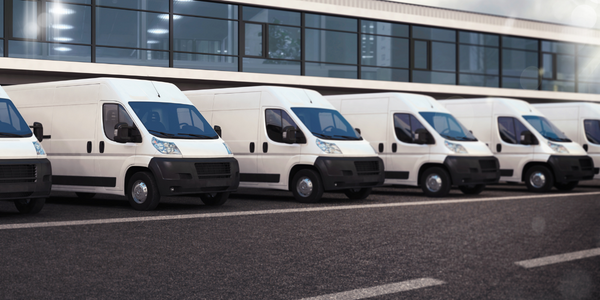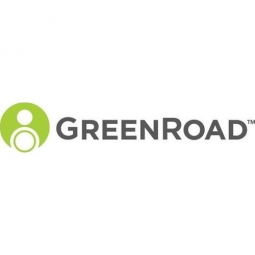Download PDF
Stagecoach Achieves Sustainability Goals with GreenRoad's IoT Solution

Technology Category
- Functional Applications - Fleet Management Systems (FMS)
- Networks & Connectivity - Routers & Bridges
Applicable Industries
- Automotive
- Equipment & Machinery
Applicable Functions
- Logistics & Transportation
Use Cases
- Fleet Management
- Vehicle Performance Monitoring
Services
- System Integration
- Training
The Challenge
Stagecoach Group, one of the world's largest public transport groups, was facing a significant challenge in improving the sustainability of its operations. The company, which operates approximately 8,400 buses across the UK and carries around 2.5 million passengers daily, had set a goal to significantly reduce its fleet transport CO2 emissions by 3%. However, achieving this ambitious aim was proving to be difficult. Stagecoach needed a solution that would not only help it meet its emission reduction goals but also reduce fuel consumption, decrease vehicle wear and tear, and enhance passenger comfort and safety. To address these challenges, Stagecoach turned to GreenRoad, a provider of driver behavior and fleet performance management solutions.
The Customer
Stagecoach Group
About The Customer
Stagecoach Group is one of the world's largest public transport groups, operating approximately 8,400 buses across the UK. The company provides services from England's south coast to Scotland's most remote islands, transporting around 2.5 million passengers each day. Over the past decade, Stagecoach has been focused on improving the sustainability of its operations, with a particular emphasis on reducing its fleet transport CO2 emissions. The company has been proactive in seeking out innovative solutions to help it achieve its ambitious sustainability goals.
The Solution
Stagecoach implemented GreenRoad's platform across its 116 depots, supplementing it with a comprehensive program of training, ongoing monitoring, and an incentive scheme. The platform provided practical tools for identifying and eliminating idling and other fuel-wasting behaviors, leading to an immediate reduction in fuel consumption and carbon emissions. The solution also helped extend the life of vehicle components, such as brakes, by reducing wear and tear. In addition, Stagecoach partnered with GreenRoad in 2020 to develop technology for preventing low bridge strikes, a significant issue for England's double-decker buses. The system alerts drivers in time to prevent such incidents, thereby enhancing passenger safety.
Operational Impact
Quantitative Benefit
Related Case Studies.

Case Study
Smart Water Filtration Systems
Before working with Ayla Networks, Ozner was already using cloud connectivity to identify and solve water-filtration system malfunctions as well as to monitor filter cartridges for replacements.But, in June 2015, Ozner executives talked with Ayla about how the company might further improve its water systems with IoT technology. They liked what they heard from Ayla, but the executives needed to be sure that Ayla’s Agile IoT Platform provided the security and reliability Ozner required.

Case Study
IoT enabled Fleet Management with MindSphere
In view of growing competition, Gämmerler had a strong need to remain competitive via process optimization, reliability and gentle handling of printed products, even at highest press speeds. In addition, a digitalization initiative also included developing a key differentiation via data-driven services offers.

Case Study
Predictive Maintenance for Industrial Chillers
For global leaders in the industrial chiller manufacturing, reliability of the entire production process is of the utmost importance. Chillers are refrigeration systems that produce ice water to provide cooling for a process or industrial application. One of those leaders sought a way to respond to asset performance issues, even before they occur. The intelligence to guarantee maximum reliability of cooling devices is embedded (pre-alarming). A pre-alarming phase means that the cooling device still works, but symptoms may appear, telling manufacturers that a failure is likely to occur in the near future. Chillers who are not internet connected at that moment, provide little insight in this pre-alarming phase.

Case Study
Premium Appliance Producer Innovates with Internet of Everything
Sub-Zero faced the largest product launch in the company’s history:It wanted to launch 60 new products as scheduled while simultaneously opening a new “greenfield” production facility, yet still adhering to stringent quality requirements and manage issues from new supply-chain partners. A the same time, it wanted to increase staff productivity time and collaboration while reducing travel and costs.

Case Study
Integration of PLC with IoT for Bosch Rexroth
The application arises from the need to monitor and anticipate the problems of one or more machines managed by a PLC. These problems, often resulting from the accumulation over time of small discrepancies, require, when they occur, ex post technical operations maintenance.

Case Study
Robot Saves Money and Time for US Custom Molding Company
Injection Technology (Itech) is a custom molder for a variety of clients that require precision plastic parts for such products as electric meter covers, dental appliance cases and spools. With 95 employees operating 23 molding machines in a 30,000 square foot plant, Itech wanted to reduce man hours and increase efficiency.





